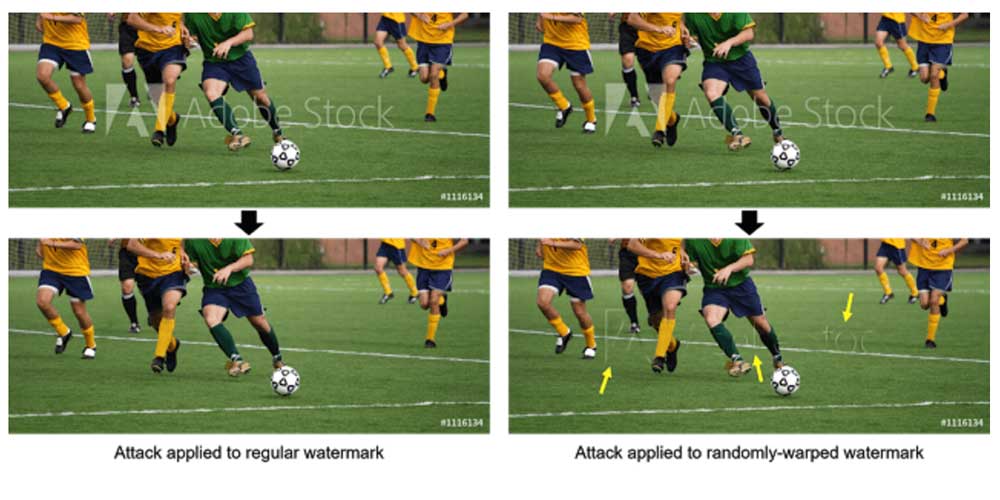
When searching for images on the web, how often do you see images that are protected with watermarks? More than often.
Professional photographers, for example, usually put watermarks on their images to protect their copyrights and prevent people from using them without their permission.
Stock photo distributors is another example. They are making business by distributing photos, but watermark them. When someone buys them, they will have the watermark removed.
Researchers from Google have developed an Artificial Intelligence (AI) that uses algorithm to remove watermarks from images in a matter of seconds, automatically.
The researchers were able to identify a glaring error in this approach and exploit it to remove the visibility of watermarks altogether.
The method has been documented in more detail in a paper titled On the Effectiveness of Visible Watermarks. It describes how the algorithm essentially takes advantage of the fact that watermarks are indeed an image layer applied on top of photos.
Watermark consistency is the main weakness.
The Googlers explained that the trick was to teach the computer how to accurately identify the repeating watermark structures and then fine-tune it how to replace them.
"If a similar watermark is embedded in many images, the watermark becomes the signal in the collection and the images become the noise, and simple image operations can be used to pull out a rough estimation of the watermark pattern," said Tali Dekel and Michael Rubinstein.

As comparison. People with editing skills can certainly remove watermarks from images with tools like Adobe Photoshop in a matter of several minutes, and can even be much longer depending on the difficulties. But the researchers were able to train a model to perform the same task much faster.
The algorithm can remove watermarks a lot faster is a convincing result, all that without human intervention.
Fortunately for stock photo vendors and professional photographers, the researchers also provides a solution. With the initiative, they come up with a more robust way to protect photos from watermark-removing software.
And that is by applying inconsistencies to their watermark patterns.
The Googler noticed that a slight modification to the watermark - like changing its position, shape or opacity - can increase the difficulties for the algorithm to understand the watermark.
